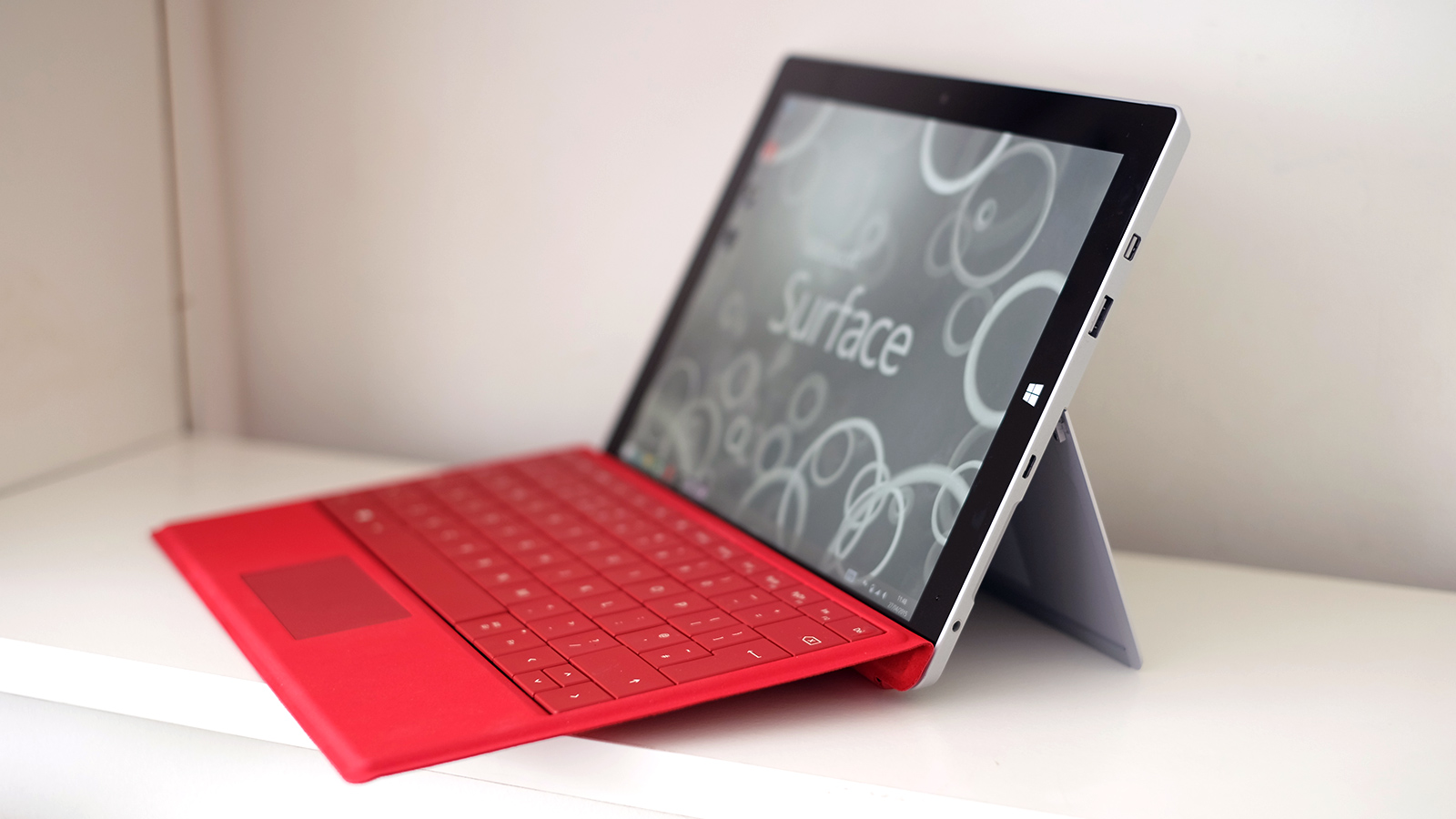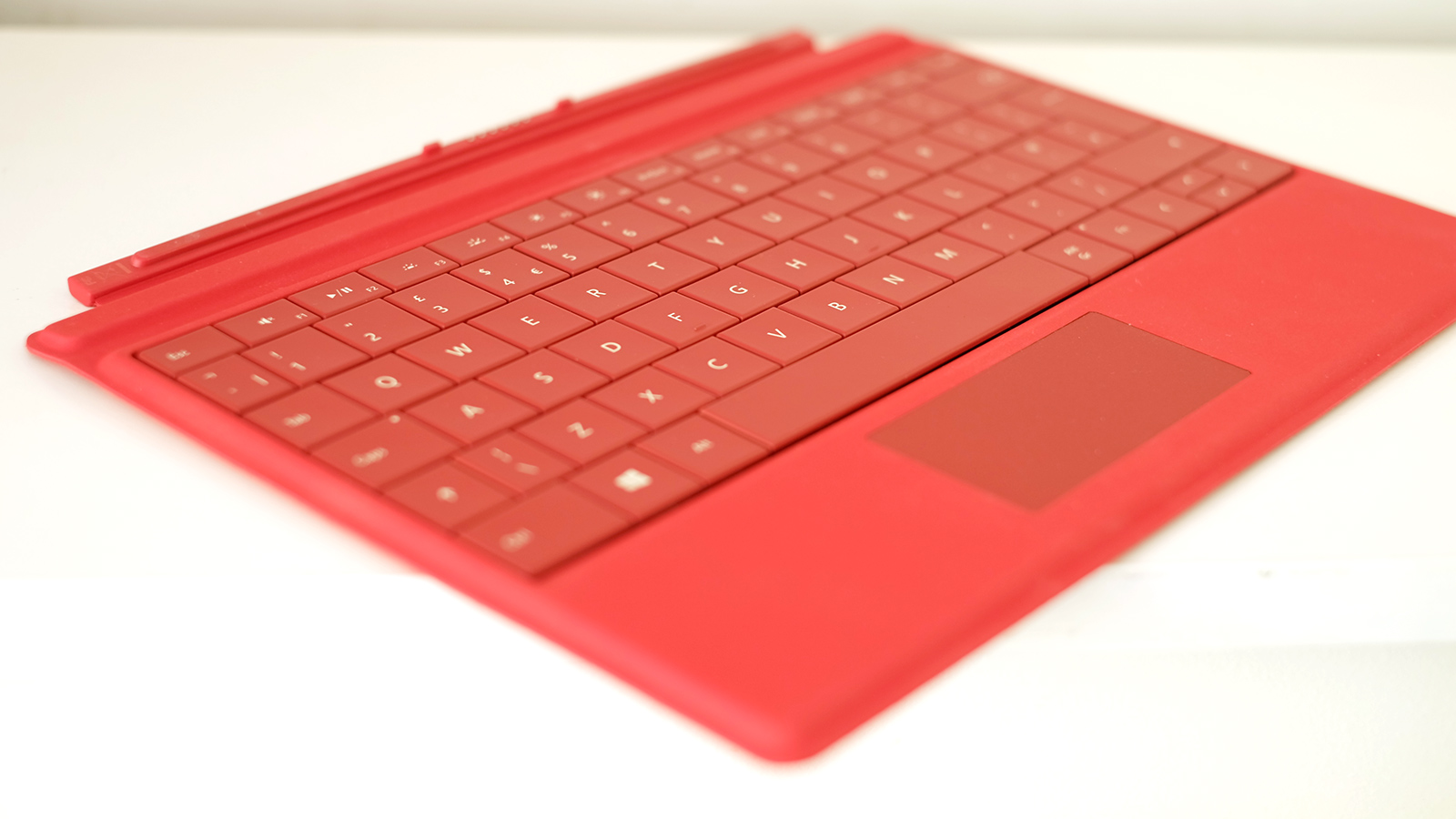Microsoft Surface 3 review
Will it be third time lucky for Microsoft's Surface?

The Microsoft Surface 3 is comfortably the best of the lower-cost Surface hybrids to date. The sum of improvements made to the hardware, both in the tablet part and the keyboard, and full Windows 8.1’s flexibility make it a very workable portable companion to a more powerful desk-bound laptop or desktop.
-
+
Good screen quality; greatbattery life; strong removable keyboard
-
-
Low CPU and storage performance; limited RAM; Fiddly to use on lap
The sacrifice is that the Surface 3 doesn't feel quite right when left resting on the knees, rather than a proper flat surface. It is not to be ruled out entirely, but as the device's weight is left resting on a very small surface area beyond the screen itself, it it simply not as comfortable or as secure as a traditional laptop design. The keyboard simply isn't used as a weight-bearing part here.
Keyboard
The keyboard is one of the Surface 3's most important elements, though. Like 2014's Surface Pro 3 design, it attaches to the screen part with magnets, while the actual connection is made using a few metal contacts on the side of the screen part.

Unlike some other hybrids, the connection between the two parts is physical, not wireless. This eradicates most issues with key responsiveness, although during testing there were a few moments when the keyboard had to be removed and reseated before being recognised by the Surface 3. These are minor niggles in use, though.
For the most part the keyboard is a great success. Thanks to the use of full-size keys and key travel on-par with some Ultrabooks, the Surface 3's typing experience is convincingly authentic given the keyboard is just a few millimetres thick. That is, after the user has become accustomed to the slight buzzy feel of the board.
Sign up today and you will receive a free copy of our Future Focus 2025 report - the leading guidance on AI, cybersecurity and other IT challenges as per 700+ senior executives
-
 ‘1 engineer, 1 month, 1 million lines of code’: Microsoft wants to replace C and C++ code with Rust by 2030 – but a senior engineer insists the company has no plans on using AI to rewrite Windows source code
‘1 engineer, 1 month, 1 million lines of code’: Microsoft wants to replace C and C++ code with Rust by 2030 – but a senior engineer insists the company has no plans on using AI to rewrite Windows source codeNews Windows won’t be rewritten in Rust using AI, according to a senior Microsoft engineer, but the company still has bold plans for embracing the popular programming language
By Ross Kelly Published
-
 Google drops $4.75bn on data center and energy firm Intersect
Google drops $4.75bn on data center and energy firm IntersectNews The investment marks the latest move from Google to boost its infrastructure sustainability credentials
By Nicole Kobie Published
-
 OpenAI says prompt injection attacks are a serious threat for AI browsers – and it’s a problem that’s ‘unlikely to ever be fully solved'
OpenAI says prompt injection attacks are a serious threat for AI browsers – and it’s a problem that’s ‘unlikely to ever be fully solved'News OpenAI details efforts to protect ChatGPT Atlas against prompt injection attacks
By Nicole Kobie Published